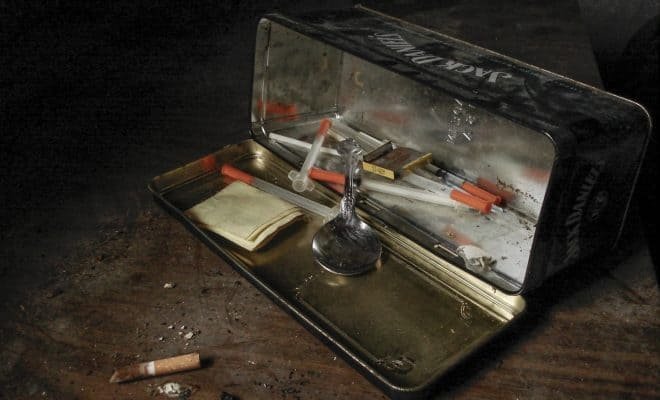Strange Medicine: Injected Mushrooms

Welcome to Strange Medicine—a series of nonfiction articles based on recent journal published, peer-reviewed case studies, review articles, meta-studies, scientific studies, and primary literature. Each relates to events that made the medical community’s eyes widen and scratch their heads, though, please note that all are significant toward scientific and medical progress because they also forced us to consider the unknown.
A 30-year-old man presents to the Emergency Department with severe confusion and physical distress. His family states they discovered him after he broke contact and discontinued his medications for his Bipolar Disorder (Type 1). His lips are blue; mucous membranes pale and dry, while his eyes are yellowing and heart racing. His blood pressure continues to plummet. The accompanying lethargy, diarrhea, and bloody vomit his family suspects have occurred for the past few days persist. Attempts to interview him are futile. The hospital conducts laboratory studies to understand the situation better. What they find, shocks them.
As his organs fail and staff rush to admit him to the ICU, two blood cultures come back indicative of a more sinister infection combination: bacteremia and fungemia. But from what? His septicemia appeared to result from a bacterial infection from a member of the genus Brevibacillus. These bacteria are commonly found in soil and decaying material, so how did they end up in his bloodstream? Upon checking the fungemia cause, the lab returned Psilocybe cubensis, or psychedelic mushrooms.
Now, things start to add up.
Upon further interview with his family and investigation of the home during his treatment, staff discovered that the patient created an extract of the mushrooms, then “filtered it through a cotton ball” before injecting it into himself. He did this in hopes of self-medicating his bipolar disorder and opioid addiction independent of professional medical advice or supervision. While microdosing with the derivative substance psilocybin is being investigated for its medical applications, injection has not been investigated as a route of administration. Given the extreme state of confusion persisting at the time of writing, the authors of the case study could not say if fungal infection with Psilocybe cubensis results in psilocybin load in the circulatory system. Acutely, it is known that psilocybin causes alterations in the regions of the brain responsible for perception, memory, and attention. While the septicemia and general acute distress upon presentation to the emergency department is well explained, these effects could influence the continued confusion in the ICU after the administration of antibiotics.
This is not the first known case of an individual presenting to the Emergency Room for injecting themselves with the extract of psychedelic mushrooms in an effort to self-medicate. Unfortunately, prior to 2000 toxicologists and medical hospital laboratories struggled to culture or detect Psilocybe cubensis from patient body fluids, meaning the limited data set researchers currently possess exists because of our limited technology and not due to changes in human behavior. Since the year 2000, the ability to detect extracts and other derivatives of this fungus has allowed medical research to expand significantly. Recent studies have shown that the derivatives of Psilocybe cubensis cause physical changes in both the amygdala and prefrontal cortex regions of the brain in individuals with treatment-resistant depression, suggesting a morphological reason for observed long-term changes to emotional regulation and processing.
Medical professionals advise that, though becoming more accessible and better researched, please not inject Psilocybe cubensis, or really anything into your body without first discussing this with a medical professional. One 2020 study in Nature pointed out that emotions and brain functions appear to show lasting changes with no intervention for approximately one month. This suggests that the beneficial psychological changes observed may not all be permanent without additional therapies. Over the past year, while many remained stuck in isolation, research into the potential of psychedelic substances continued on. The peer-reviewed publications hit the medical community showing efficacy of use of these fungi and their derivatives in the treatment of addiction and dual diagnosis, forms of depression and mental illness, and even chronic migraines. These publications coincidentally coincided with Oregon’s legalization of psychedelic mushrooms. Criticism of these studies includes comparisons to the placebo effect when examining microdosing. While the medical community understands some patients are impatient, it turns out doctors don’t want individuals interested in taking mushrooms for their ailments to have a bad “trip” regardless of where it may take them. Personally, I will continue to wait until the medical community reaches a more conclusive consensus regarding mind-altering substances.
For further reading on this therapeutic research I suggest checking out: Psilocybin Therapeutic Research: The Present And Future Paradigm by Roberg B Karbgo ACS Medicinal Chemistry Letters
Based on the article: Giancola NB, Korson CJ, Caplan JP, McKnight CA, A “trip” to the ICU: intravenous injection of psilocybin, Journal of the Academy of Consultation–Liaison Psychiatry (2021), doi: https://doi.org/10.1016/j.jaclp.2020.12.012.
Featured image photographed by Lo Potter, 2021 for coffeehousewriters.com










